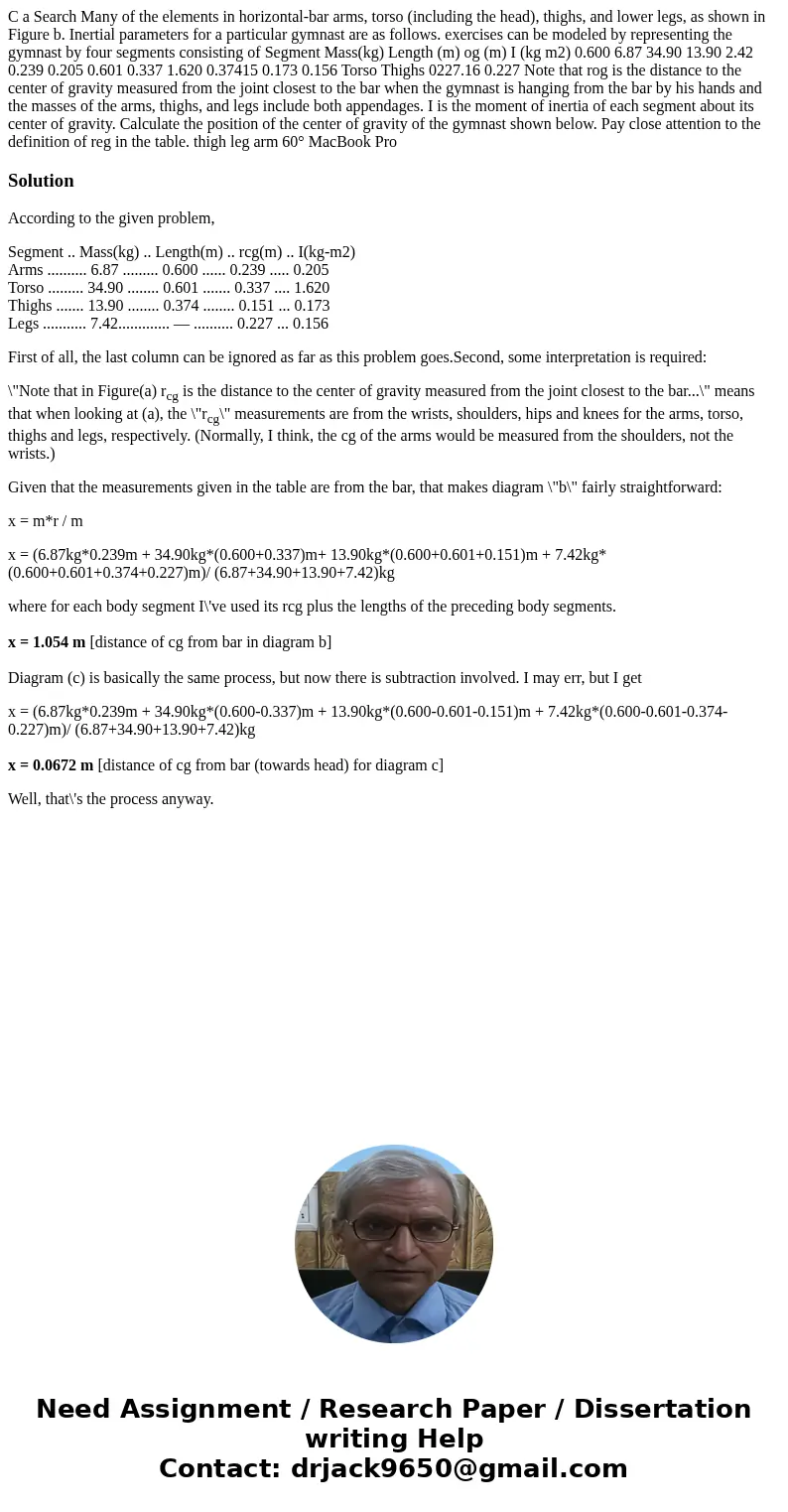C a Search Many of the elements in horizontalbar arms torso
Solution
According to the given problem,
Segment .. Mass(kg) .. Length(m) .. rcg(m) .. I(kg-m2)
Arms .......... 6.87 ......... 0.600 ...... 0.239 ..... 0.205
Torso ......... 34.90 ........ 0.601 ....... 0.337 .... 1.620
Thighs ....... 13.90 ........ 0.374 ........ 0.151 ... 0.173
Legs ........... 7.42............. — .......... 0.227 ... 0.156
First of all, the last column can be ignored as far as this problem goes.Second, some interpretation is required:
\"Note that in Figure(a) rcg is the distance to the center of gravity measured from the joint closest to the bar...\" means that when looking at (a), the \"rcg\" measurements are from the wrists, shoulders, hips and knees for the arms, torso, thighs and legs, respectively. (Normally, I think, the cg of the arms would be measured from the shoulders, not the wrists.)
Given that the measurements given in the table are from the bar, that makes diagram \"b\" fairly straightforward:
x = m*r / m
x = (6.87kg*0.239m + 34.90kg*(0.600+0.337)m+ 13.90kg*(0.600+0.601+0.151)m + 7.42kg*(0.600+0.601+0.374+0.227)m)/ (6.87+34.90+13.90+7.42)kg
where for each body segment I\'ve used its rcg plus the lengths of the preceding body segments.
x = 1.054 m [distance of cg from bar in diagram b]
Diagram (c) is basically the same process, but now there is subtraction involved. I may err, but I get
x = (6.87kg*0.239m + 34.90kg*(0.600-0.337)m + 13.90kg*(0.600-0.601-0.151)m + 7.42kg*(0.600-0.601-0.374-0.227)m)/ (6.87+34.90+13.90+7.42)kg
x = 0.0672 m [distance of cg from bar (towards head) for diagram c]
Well, that\'s the process anyway.

 Homework Sourse
Homework Sourse